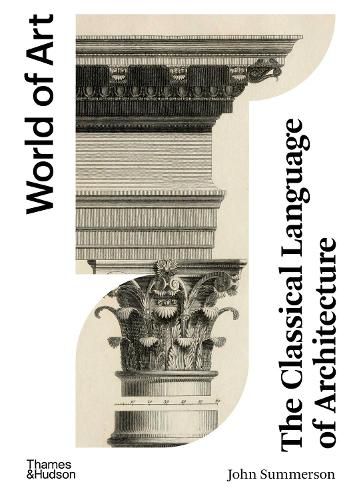Readings Newsletter
Become a Readings Member to make your shopping experience even easier.
Sign in or sign up for free!
You’re not far away from qualifying for FREE standard shipping within Australia
You’ve qualified for FREE standard shipping within Australia
The cart is loading…






A revised and updated edition of Sir John Summerson's classic book.
Derived from the principles of Greek and Roman architecture in antiquity, the classical style has long dominated the history of western architecture from the Renaissance to the present. Sir John Summerson's timeless text, as relevant today as it was when first published, distils the visual language of architecture into its core classical elements, and illustrates that building throughout the ages express an awareness of the 'grammar' of style and its rules even if they vary, break or poetically contradict them. From the original edifices of Greece and Rome to the recapitulations and innovations of the Renaissance; the explosive rhetoric of the Baroque to the grave statements of Neo-classicism; and finally, the exuberant eclecticism of the Victorians and Edwardians to the 'stripped Neo-classicism' of some of the moderns; Summerson explains how every period has employed classical language to make their statement.
With a new introduction by academic and architectural historian Alan Powers, this introduction continues to be one of the defining texts on the subject and is essential reading for all students of architecture.
$9.00 standard shipping within Australia
FREE standard shipping within Australia for orders over $100.00
Express & International shipping calculated at checkout
A revised and updated edition of Sir John Summerson's classic book.
Derived from the principles of Greek and Roman architecture in antiquity, the classical style has long dominated the history of western architecture from the Renaissance to the present. Sir John Summerson's timeless text, as relevant today as it was when first published, distils the visual language of architecture into its core classical elements, and illustrates that building throughout the ages express an awareness of the 'grammar' of style and its rules even if they vary, break or poetically contradict them. From the original edifices of Greece and Rome to the recapitulations and innovations of the Renaissance; the explosive rhetoric of the Baroque to the grave statements of Neo-classicism; and finally, the exuberant eclecticism of the Victorians and Edwardians to the 'stripped Neo-classicism' of some of the moderns; Summerson explains how every period has employed classical language to make their statement.
With a new introduction by academic and architectural historian Alan Powers, this introduction continues to be one of the defining texts on the subject and is essential reading for all students of architecture.